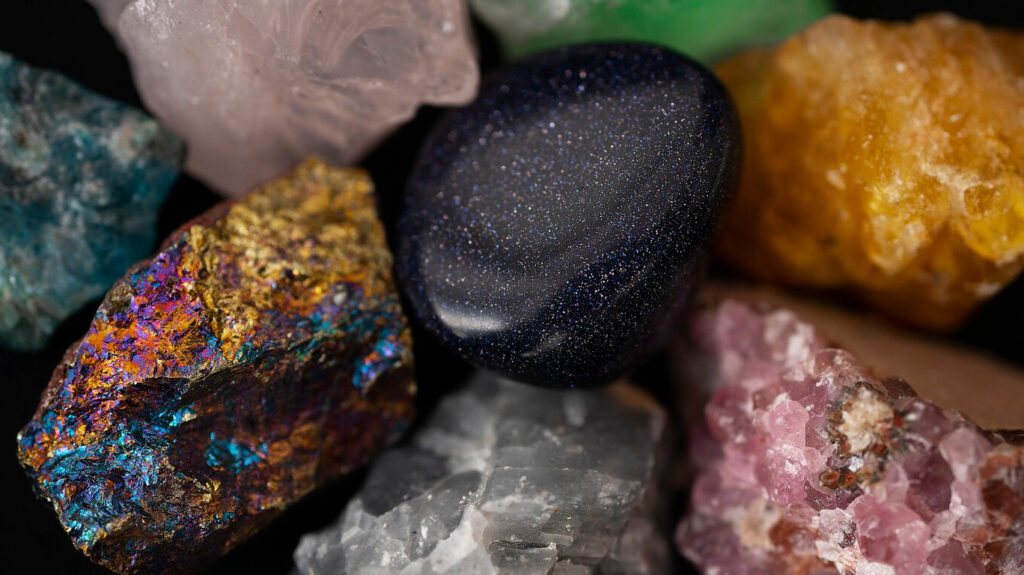
A Journey Through Time: The Rich History of Gemstones
Embark on a captivating journey through time as we explore the rich history of gemstones. From the early beginnings of the first known gemstones to their influence in different cultures like ancient Egyptian, Greek, and Roman societies, this article delves into the fascinating world of precious stones.
Discover how gemstones gained popularity in the Middle Ages, played a pivotal role in the Renaissance period, and were impacted by the Industrial Revolution.
We also take a closer look at the rise of gemstone mining and trade, as well as the future innovations and advancements in the gemstone industry.
Join us as we uncover the past, present, and future of these valuable commodities.
The Early Beginnings of Gemstones
The early beginnings of gemstones trace back to ancient times when these precious minerals were first discovered and revered for their beauty and symbolism.
In these early civilizations, gemstones were not only treasured for their aesthetic appeal but also held deep cultural significance. Ancient mining methods were employed to extract these jewels from the earth, often through labor-intensive processes that showcased the dedication of these civilizations to acquiring these precious stones.
The historical contexts of these gemstones reveal how they were used in rituals, ceremonies, and even burials, underscoring their importance in society. The association of certain gemstones with birthstones originated in these ancient times, signifying the symbolic meanings attached to these colorful treasures.
What Were the First Known Gemstones?
The first known gemstones date back to ancient times, with origins rooted in the geological formation process and archaeological discoveries that unearthed these precious minerals.
These gemstones, such as diamonds, emeralds, rubies, and sapphires, were formed deep within the Earth’s crust over millions of years. Through volcanic activity and intense pressure, these minerals crystallized to become the dazzling stones we admire today.
Archaeological excavations have revealed that ancient civilizations prized these gems for their rarity, beauty, and believed mystical powers. These gemstones held significant cultural importance, often adorning royalty and used in religious ceremonies, symbolizing wealth, power, and protection.
Their allure continues to captivate modern society, connecting us to our ancient past and revering the enduring beauty of these natural treasures.
How Were Gemstones Used in Ancient Times?
In ancient times, gemstones held a prominent role in folklore, legends, and mythology, often adorning jewelry and carrying symbolic meanings that transcended mere aesthetic value.
These ancient gemstones were believed to possess mystical powers and were intricately woven into the fabric of various civilizations. From the Egyptians using lapis lazuli in funerary masks to the Greeks adorning themselves with amethyst to prevent intoxication, gemstones were deeply intertwined with daily life and cultural beliefs.
Their colors and properties were often associated with deities and celestial bodies, with each gem holding different meanings and powers. The craftsmanship required to create intricate gemstone jewelry was a skill that was highly revered and passed down through generations, showcasing the importance of these gems in ancient societies.
The Influence of Gemstones in Different Cultures
The influence of gemstones in different cultures spans across beliefs, superstitions, and the opulent displays of wealth in various empires and civilizations throughout history.
Historically, gemstones have held significant cultural value beyond their physical beauty, often becoming intertwined with spiritual beliefs and societal practices. In many ancient civilizations, gemstones were believed to possess mystical powers, offering protection and bringing good fortune to those who wore them. From the ancient Egyptians adorning themselves with lapis lazuli to the Indians placing importance on the healing properties of emeralds, these precious stones played a crucial role in shaping the cultural identities of these societies.”
What Were the Beliefs and Superstitions Surrounding Gemstones?
Beliefs and superstitions surrounding gemstones were deeply intertwined with symbolism, mythology, and the emerging field of gemology that sought to understand the mystical properties of these precious minerals.
Throughout history, gemstones have captivated human imagination with their perceived powers to offer protection, luck, and healing. From ancient civilizations to modern times, gemstone beliefs have influenced cultures worldwide.
For example, the ancient Egyptians adorned themselves with lapis lazuli for its association with royalty and wisdom. In Greek mythology, amethyst was believed to prevent intoxication, while in Eastern traditions, jade symbolized purity and prosperity.
As gemology evolved into a scientific discipline, researchers delved into the geological processes that form gemstones, shedding light on their physical and metaphysical characteristics.
How Were Gemstones Used in Ancient Egyptian Culture?
In ancient Egyptian culture, gemstones adorned treasures and artifacts, symbolizing power, spirituality, and the afterlife in the intricate archaeological findings of this ancient civilization.
These Egyptian gemstone artifacts were meticulously crafted and held great importance in religious ceremonies, with certain stones like lapis lazuli representing the heavens and turquoise symbolizing protection. The cultural symbolism attached to these gemstones extended beyond aesthetics, influencing beliefs around health, luck, and protection. Archaeological discoveries have revealed intricate carvings and inscriptions featuring gemstones, showcasing the craftsmanship and reverence for these precious materials in Egyptian society.
What Role Did Gemstones Play in Ancient Greek and Roman Societies?
Gemstones played pivotal roles in ancient Greek and Roman societies, intertwined with legends, mythology, and the burgeoning commerce that showcased the value and beauty of these precious minerals.
These societies attributed mystical properties to various gemstones, believing they could bring protection, prosperity, and healing powers. Legends such as the story of the sapphire and its association with Apollo, the god of prophecy and oracles, or the belief that amethyst could prevent intoxication, highlight the deep-rooted connection between gemstones and the spiritual beliefs of the time.
The commercial trade of gemstones thrived, with merchants traveling far and wide to acquire these treasures, further enhancing their allure and status in society.
The Evolution of Gemstones in Modern Times
The evolution of gemstones in modern times reflects their journey through the Middle Ages, Renaissance period, and the transformative impacts of the Industrial Revolution on the gemstone industry.
During the Middle Ages, gemstones held mystical and healing properties, often adorned by royalty and clergy for symbolic significance. The Renaissance saw a revival in the appreciation of gemstones for their beauty and rarity, becoming status symbols for the elite. With the onset of the Industrial Revolution, advancements in mining technologies revolutionized the gemstone industry, leading to increased production and accessibility of gemstones to a wider audience.
How Did Gemstones Gain Popularity in the Middle Ages?
The popularity of gemstones surged in the Middle Ages, driven by their rarity, intrinsic beauty, and the increasing focus on gemstone education that enhanced their value among the elite.
During the medieval period, gemstones became a symbol of wealth and status, reflecting the changing beauty standards of the time. As society placed a premium on adornment, gemstones stood out for their vibrant colors and unique properties.
This era saw a shift towards appreciating these precious stones not just for their aesthetic appeal but also for their symbolic meanings. Educational initiatives by scholars and artisans played a crucial role in disseminating knowledge about gemstones, elevating their cultural significance and desirability.
What Role Did Gemstones Play in the Renaissance Period?
Gemstones held a significant role in the Renaissance period, adorning artifacts and treasures with expert gemcutting and polishing techniques that elevated their allure and craftsmanship.
Their presence in artistic treasures of the time showcased the pinnacle of Renaissance gemstone craftsmanship, reflecting the era’s fascination with beauty and luxury. The refinement of historical gemcutting methods during this period not only enhanced the brilliance of gemstones but also symbolized the exquisite artistry and attention to detail that defined Renaissance craftsmanship. The elegantly cut and polished gems not only served as decorative embellishments but also held symbolic meanings, adding depth and significance to the jewelry and artifacts of that era.
How Did the Industrial Revolution Impact the Gemstone Industry?
The gemstone industry underwent profound changes during the Industrial Revolution, revolutionizing mining techniques, extraction methods, and global trade practices that reshaped the dynamics of the gemstone market.
This period marked the advent of industrial gemstone innovations such as steam-powered machinery that significantly increased the efficiency and scale of mining operations. These technological advancements not only expedited the extraction process but also allowed for the discovery and extraction of gemstone deposits previously inaccessible. Consequently, the industry saw a surge in production and availability of gemstones, leading to a shift in supply chains and trade routes as these precious stones began to traverse across continents, fueling a global demand for exquisite gemstone creations.
The Rise of Gemstone Mining and Trade
The rise of gemstone mining and trade marked a pivotal era where these valuable commodities were extracted, traded, and coveted for their rare beauty and symbolic significance across international markets.
This historical context traces back to ancient civilizations that first unearthed gemstones and recognized their value beyond mere aesthetics. From the opulent gemstone adornments of Egyptian pharaohs to the intricate jewelry of the Roman elite, gemstones held a mesmerizing allure.
Over time, extraction methods evolved from rudimentary tools to sophisticated mining techniques, with miners navigating treacherous terrains in search of the precious stones. The gemstone trade history is imbued with tales of adventure and discovery, as gemstones traversed continents through intricate global trade networks, reaching markets far and wide.
What Are the Most Famous Gemstone Mines in History?
Some of the most famous gemstone mines in history have yielded extraordinary treasures that speak to the craftsmanship and ingenuity of ancient civilizations that valued these precious minerals.
These legendary treasures were not only symbols of wealth and power but also held significant cultural and spiritual importance.
For example, the ancient Egyptian civilization placed great value on gemstones like lapis lazuli and turquoise, using them in their elaborate jewelry and burial rituals. Similarly, the Roman Empire’s renowned mines in regions like Egypt and India produced exquisite gems like emeralds and rubies, adorning their elite with luxury and prestige.
The appreciation for these gemstones transcended mere adornment; they were seen as talismans of protection and prosperity.
How Did Gemstones Become a Valuable Commodity in International Trade?
Gemstones ascended to the status of valuable commodities in international trade through the intricate web of commerce, gemological knowledge, and their enduring significance as symbols of wealth and beauty.
Their journey from raw minerals to sought-after treasures involves a complex interplay of supply chains, market demands, and gemological advancements. The evolution of the gemstone trade has seen traditional markets expanding globally, with gemstones becoming ingrained in cultures as symbols of status and charm. Gemological contributions, such as enhanced identification techniques and quality standards, have played a pivotal role in shaping consumer preferences and ensuring the authenticity of gemstone transactions in a competitive market.
The Future of Gemstones
The future of gemstones holds promise with ongoing innovations and advancements shaping the industry to meet changing demands and preferences of consumers in a dynamic market landscape.
In the gemstone industry, technological innovations are playing a pivotal role in revolutionizing mining, cutting, and polishing processes to enhance the quality of gemstones. As consumer awareness about ethical sourcing and sustainability increases, there is a growing emphasis on transparency along the entire supply chain. This shift towards responsible sourcing is expected to drive future demand projections, with consumers showing a preference for ethically-sourced gemstones. These evolving industry trends are paving the way for a more ethical and transparent gemstone market that caters to the values and preferences of the modern consumer.
What Innovations and Advancements Are Being Made in the Gemstone Industry?
Innovations and advancements in the gemstone industry encompass cutting-edge techniques in gemcutting, gemsetting, and gemmology that redefine the standards of craftsmanship and quality in the production of fine gemstone jewelry.
These revolutionary strides in the field of gemstone industry innovations have ushered in a new era of creativity and precision. Craftsmanship advancements now allow artisans to unleash their creativity while maintaining utmost precision in shaping and arranging gemstones.
Breakthroughs in gemmological practices have led to a deeper understanding of gemstone properties, resulting in more informed decisions during the jewelry production process. The marriage of traditional expertise with modern technology has elevated the artistry and elegance of gemstone jewelry, captivating connoisseurs and enthusiasts alike.
How Will the Demand for Gemstones Change in the Future?
The evolving landscape of gemstone demand in the future will be shaped by factors like rarity, emerging gemstone varieties, and shifting preferences that redefine the market dynamics for these prized minerals.
As gemstone demand projections continue to indicate a surge in interest for unique and rare gemstones, the industry is witnessing a significant shift towards these exclusive finds. Consumers are increasingly drawn towards unconventional and lesser-known gem varieties, seeking to stand out with distinctive pieces. This evolving market landscape pushes gemstone suppliers to adapt by sourcing and promoting these new and rare gems to cater to the changing consumer preferences. Trend forecasting plays a crucial role in anticipating and meeting the demands of the ever-evolving gemstone market.




No Comments